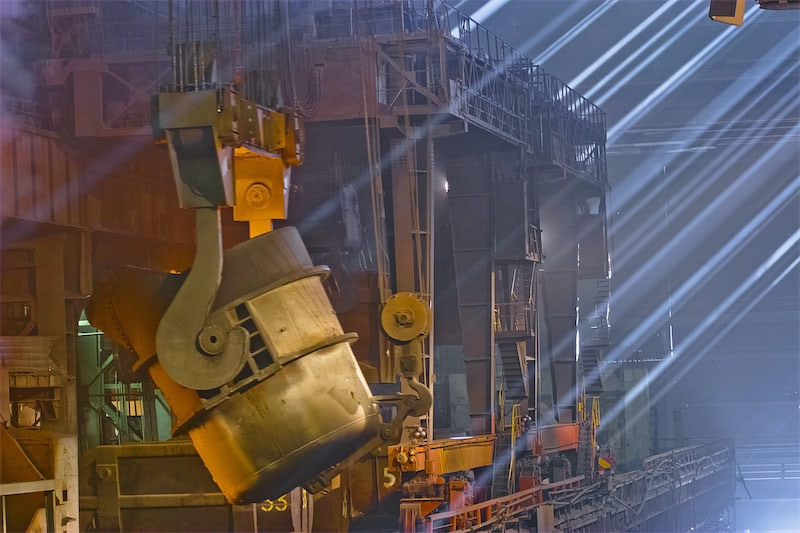







SHANGHAI, Sep 7 (SMM) - SHFE SS2210 contract opened at 15,840 yuan/mt in the night session of September 5, and then rose quickly to 16,000 yuan/mt and finally closed the session at 16,125 yuan/mt. The contract rose after opening in the day session of September 6, and closed the day at 16,375 yuan/mt, up 4.2%, with an average of 16,197 yuan/mt. The open interest added 9,080 lots to 77,372 lots. The spread between front-month and next- month contract stood at 295 yuan/mt, and the warrants inventory was flat from the last trading day at 1,585 mt.
Recently, the SS contract has been on the rise, which exceeded the expectations of most market players. SMM will look behind this issue from the perspective of the macro front, news end, fundamentals and cost side.
Macro: The People’s Bank of China announced that starting from September 15, 2022, the foreign exchange deposit reserve ratio of financial institutions will be lowered by 2 percentage points with the purpose of boosting the liquidity. The non-ferrous metals market rose subsequently. (Bullish)
Overseas stainless steel market: (1) According to foreign media, due to the high costs caused by the energy crisis and the impact of weak demand, large European stainless steel producers such as Aperam in Genk, a major European stainless steel producing hub, are considering suspending the production. (Bullish)
(2) ArcelorMittal, the world's largest steel producer, decided to suspend the production due to the high cost of natural gas and electricity, and the German federal government plans to increase gas taxes in October. The shutdown has greatly affected its stainless steel production. (Bullish)
(3) According to South Korean steel manufacturer POSCO, on the morning of September 6 local time, a fire broke out at its second stainless steel plant and the second hot rolling plant at the same time, and its production is expected to be affected to some extent.
Many large stainless steel mills overseas have seen their production affected due to energy crisis or other unexpected factors. On the whole, the overseas supply of stainless steel is expected to contract in September, but the rigid demand still exists or even ramps up. Hence the overseas market may be in the state of weakening supply and recovering demand. In addition, the inflow of Indonesia stainless steel to China has decreased in September, while the increment in domestic supply has been less than expected. The SS contract has gained substantially upside momentum.
Domestic fundamentals: (1) On the demand side, according to SMM research, steel mills have recently raised their prices several times, and the orders received by the mills have also picked up. Therefore, the short-term mismatch between supply and demand still exists, but the supply shortage is mainly reflected in some specifications with scarce supply. It is expected that the spot prices of mainstream specifications will remain stable with some upside momentum in the short term. The Wuxi market reported that some orders have been transmitted to the terminal end, but the transactions in the Foshan market are still in the intermediate stage and have not yet been transmitted to the downstream. Therefore, although the market has been speculating the traditional seasonal high in September and October, which boosted the confidence of longs coupled with warming market demand, it remains to be seen whether the terminal demand could improve smoothly.
(2) On the supply side, the total output of domestic stainless steel mills is expected to increase slightly in September. Most private steel mills plan to maintain the production level seen in August, and the increase in production is mainly contributed by the newly commissioned steel mills and some large mills.
(3) On the cost side, the cost support is gradually strengthening. The demand for NPI has picked up after steel mills resume the production. And the price cut has slowed as the market players held firm to the prices. Ferrochrome prices are expected to rebound as more manufacturers reduced the production in light of serious losses. Steel scrap prices are also resilient amid supply shortage as a result of contracting circulation of scrap earlier. On the whole, the cost has a general tendency to rebound in the near future. The cost support for the SS contract is relatively strong, hence the room for decline is relatively limited.
Overall, the domestic supply and demand are still increasing simultaneously, accompanied by slight oversupply. The short-term mismatch between supply and demand has led to supply shortage in the market. The transaction situation is better with the market sentiment boomed. Furthermore, the inflow of Indonesia stainless steel to China is less than expected. And the domestic demand is picking up, while the overseas demand has also strengthened, which exceeded expectations. The SS contract has gained strong upward momentum. However, it is still necessary to stay alert as of whether steel mills will increase the production more than expected, and whether downstream consumption can be successfully transmitted to the terminal end. In addition, there is news recently that a steel mill may participate in futures contract delivery in September and October, and it is among the uncertainties that whether the futures contract could remain high in the short term. To sum up, SMM believes that the futures contract will remain high with further upside momentum in the near term.
For queries, please contact William Gu at williamgu@smm.cn
For more information on how to access our research reports, please email service.en@smm.cn